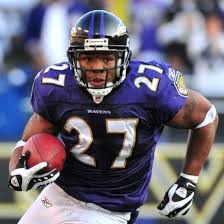[adsenseyu1]
Up next in our look at the best and worst contracts on each roster are the Baltimore Ravens.
Best Contract: Marshal Yanda
 A good contract is often a gift that keeps on giving. Even as the guard market has eroded somewhat, the deal signed by Yanda three years ago affords the Ravens top-level play at a price millions below the top of the positional market. This holds true in terms of this year’s cap cost, cash cost, and average salary per year.
A good contract is often a gift that keeps on giving. Even as the guard market has eroded somewhat, the deal signed by Yanda three years ago affords the Ravens top-level play at a price millions below the top of the positional market. This holds true in terms of this year’s cap cost, cash cost, and average salary per year.
The deal offers a good example of the effect that draft status as a rookie has on later contract negotiations. Yanda, a former third-rounder, hit unrestricted free agency and commanded notably less than his linemate Ben Grubbs—a former first-rounder, but of no greater accomplishment or acclaim—managed a year later.
Worst Contract: Ray Rice
 From a purely contractual standpoint, quarterback Joe Flacco retains the title of worst contract in Baltimore. All of the circumstances that led to his predictably getting wildly overpaid don’t change just how badly mismatched his compensation now is with the level of play that he routinely provides, nor how handcuffed the Ravens have left themselves moving forward with the structure of the deal. It’s in contention for the worst active NFL contract, period.
From a purely contractual standpoint, quarterback Joe Flacco retains the title of worst contract in Baltimore. All of the circumstances that led to his predictably getting wildly overpaid don’t change just how badly mismatched his compensation now is with the level of play that he routinely provides, nor how handcuffed the Ravens have left themselves moving forward with the structure of the deal. It’s in contention for the worst active NFL contract, period.
But off-the-field circumstances have shed light on another problematic Baltimore contract. Ray Rice was fortunate to sign a new deal seemingly moments before the bottom completely dropped out of the running back market. At the time, he felt that he was being unfairly squeezed to take only $35 million over five years, but in retrospect the deal proved to be head, shoulders, and probably also waist above just about every subsequent contract given out to a running back.
In exchange for what he believed at the time to be a paltry average per year, Rice received an exceptionally favorable payout structure. It has been common among Baltimore’s big deals to front-load the payout via big signing and option bonuses, while back-loading the cap hits, and Rice’s deal was probably the most extreme example. Through a $15 million signing bonus and a $7 million year-two option, the contract paid out more than 71% of its total cash value in the first two years, while accounting for less than 31% of the resulting cap consumption.
Combined with low base salaries throughout, the result is a deal that doesn’t offer a cap benefit to terminate, shockingly, until 2016, the last of the five covered years. Even in year four, $9.5 million in potential dead money looms. This especially poses a problem in a situation like that in which Rice found himself recently, in enough legal trouble to reflect poorly on the organization, but not enough to actually let them off the hook from their contractual obligations to him. Of course they ultimately stood behind him; they couldn’t comfortably afford to cut him, so how much choice did they really have?
2013’s Best and Worst Steelers Contracts:
2013 Best Contract: Marshal Yanda (see above)
2013 Worst Contract: Joe Flacco (still on roster; contract still bad)
Click Here to Check out OTC’s other Best and Worst Contracts from around the NFL!
[adsenseyu2]
[adsenseyu4]
[subscribe2]